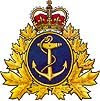
I will submit for your perusal, the following newspaper articles which provide in some minor detail, the absolutely stellar performance of a small group of men from the 3rd Battalion - Princess Patricia's Canadian Light Infantry. These individuals, as well as the remainder of their regiment, are proof positive that we do still produce military personnel who can stand shoulder to shoulder with any of the world's finest forces.
The Windsor Star
Tuesday, March 19, 2002
Top World Newsmaker C2
Cool under fire, snipers don't miss.
Crack shots prove worth in rugged hills.
By Stephen Thorne
The Canadian Press
Bagram, Afghanistan
Canada's sniper have ducked mortars and dodged bullets in eastern Afghanistan in the last two weeks. They were nearly shot to pieces by a US Apache helicopter gunship - it stopped firing just in the nick of time.
They are said to have the highest number of confirmed kills of any regular army unit in the battle, although they deny it.
And three of them, along with three US special forces soldiers, also rescued a company of American 101st Airborne Division pinned down by enemy fire on the first day of Operation Anaconda - the mission to find and destroy al-Qaida and Taliban forces in the rugged region south of Gardez.
In an interview on a castle-shaped rock from which al-Qaida fighters gave them days of misery earlier this month, one of two detachments of Canada's snipers described an arduous first week of battle.
Because of the job they do, the three youthful but cool professional sharpshooters want to be identified only by pseudonyms with their real ages, ranks and home towns.
They landed at first light on March 2, on the first US helicopter flying in with troops from the fabled Screaming Eagles. The troops started taking small-arms fire at the top of the first ridge they hit.
The Americans were pinned down but the three snipers and three special forces troops moved forward and sought high ground.
From there, they began picking off al-Qaida fighters, who were shooting from behind rock piles. A one-hour firefight ensued.
"As soon as we got rid of one guy, another one would come up, and another one," said Master Cpl. Alex, a multi-talented 30-year old raised in Ottawa and Halifax.
Soon after that battle ended, another began. Troops from the 101st were able to move into blocking positions while the six engaged a determined enemy.
"The six of us suppressed fire and neutralized the enemy - they were either dead or they ran away," said Alex. "Most of them were killed, as far as we could see."
The snipers were in their element - free-ranging, aggressive, taking the initiative.
But their talent for concealment nearly cost them their lives at the muzzles of an Apache helicopter that came in, guns blazing, chasing an enemy target just beyond them.
Lying prone in their Britist desert fatigues with padded elbows, front torsos and legs, they were almost invisible against the dry valley floor.
They heard the sound, looked back, saw the dirt spitting up in two rows - and rolled. The pilot must have seen them at the last moment because the strafing stopped less than a metre from their position.
For the sake of speed, they were moving without their 50kg rucksacks and spare ammunition. But then they were running low and needed special optics equipment.
Under fire, Cpl. Ed, 25. of Manuels, outside St. John's, Nfld., ran the 100 metres back down one side of the ridge and up the other - and then back with their gear in tow.
They were 3,500 metres high. At such altitudes, the air was gaspingly thin even at a brisk walk. Altough extremely fit, Ed was nearly passing out after the two-way sprint, with AK-47 rounds nipping at his heels.
But Ed, who's developed an uncanny Sean Connery imitation, didn't stop there. He grabbed his M-203 grenade launcher and started firing at the al-Qaida fighters who were giving them trouble from a nearby creek.
"We don't know what happened," said Alex. "All we know is, their firing stopped."
The snipers also helped extract American troops in trouble.
Under cover of darkness, they and their US special forces comrades led soldiers of the Airborne out of the danger area, scouting ahead for enemy threats and bringing the Americans up a little at a time until they eventually linked up with friendly forces.
At one point, the three Canadian snipers were pinned down by mortar fire in a dry riverbed. They were caught in the open. The rounds came as close as 10 metres.
"They were bracketing us, walking them in," said Warren. "We'd move and they'd adjust fire. Eventually they ran out of rounds or they just gave up. I don't know."
The snipers returned to base near Kabul March 11. Two days later the three were out again.
This time they were part of Operation Harpoon, with Canadian troops on "the Whale," a mountain overlooking the Shah-e-Kot valley where al-Qaida were putting up stiff resistance.
Operation Harpoon, carried out in conjunction with Operation Anaconda, consisted of 500 Canadian and 100 US troops, under command of Lt.-Col. Pat Stogran, who leads Canadian Forces in Afghanistan in the biggest ground offensive since the Korean War.
29 December 2003
By Stephen Thorne, The Canadian Press
It is interesting to note that the United states Government wanted to give this Canadian Army sniper team the Bronze Star for their combat action. But the Canadian Government thought it was not right to give an award for the taking of human lives, even during war. It's sad what has become of a once proud and respected military force the Canadian Army once was.
Also read "Bolt Actions Speak Louder Than Words" on the same snipers.
The Windsor Star
Tuesday, March 19, 2002
Top World Newsmaker C2
Cool under fire, snipers don't miss.
Crack shots prove worth in rugged hills.
By Stephen Thorne
The Canadian Press
Bagram, Afghanistan
Canada's sniper have ducked mortars and dodged bullets in eastern Afghanistan in the last two weeks. They were nearly shot to pieces by a US Apache helicopter gunship - it stopped firing just in the nick of time.
They are said to have the highest number of confirmed kills of any regular army unit in the battle, although they deny it.
And three of them, along with three US special forces soldiers, also rescued a company of American 101st Airborne Division pinned down by enemy fire on the first day of Operation Anaconda - the mission to find and destroy al-Qaida and Taliban forces in the rugged region south of Gardez.
In an interview on a castle-shaped rock from which al-Qaida fighters gave them days of misery earlier this month, one of two detachments of Canada's snipers described an arduous first week of battle.
Because of the job they do, the three youthful but cool professional sharpshooters want to be identified only by pseudonyms with their real ages, ranks and home towns.
They landed at first light on March 2, on the first US helicopter flying in with troops from the fabled Screaming Eagles. The troops started taking small-arms fire at the top of the first ridge they hit.
The Americans were pinned down but the three snipers and three special forces troops moved forward and sought high ground.
From there, they began picking off al-Qaida fighters, who were shooting from behind rock piles. A one-hour firefight ensued.
"As soon as we got rid of one guy, another one would come up, and another one," said Master Cpl. Alex, a multi-talented 30-year old raised in Ottawa and Halifax.
Soon after that battle ended, another began. Troops from the 101st were able to move into blocking positions while the six engaged a determined enemy.
"The six of us suppressed fire and neutralized the enemy - they were either dead or they ran away," said Alex. "Most of them were killed, as far as we could see."
The snipers were in their element - free-ranging, aggressive, taking the initiative.
But their talent for concealment nearly cost them their lives at the muzzles of an Apache helicopter that came in, guns blazing, chasing an enemy target just beyond them.
Lying prone in their Britist desert fatigues with padded elbows, front torsos and legs, they were almost invisible against the dry valley floor.
They heard the sound, looked back, saw the dirt spitting up in two rows - and rolled. The pilot must have seen them at the last moment because the strafing stopped less than a metre from their position.
For the sake of speed, they were moving without their 50kg rucksacks and spare ammunition. But then they were running low and needed special optics equipment.
Under fire, Cpl. Ed, 25. of Manuels, outside St. John's, Nfld., ran the 100 metres back down one side of the ridge and up the other - and then back with their gear in tow.
They were 3,500 metres high. At such altitudes, the air was gaspingly thin even at a brisk walk. Altough extremely fit, Ed was nearly passing out after the two-way sprint, with AK-47 rounds nipping at his heels.
But Ed, who's developed an uncanny Sean Connery imitation, didn't stop there. He grabbed his M-203 grenade launcher and started firing at the al-Qaida fighters who were giving them trouble from a nearby creek.
"We don't know what happened," said Alex. "All we know is, their firing stopped."
The snipers also helped extract American troops in trouble.
Under cover of darkness, they and their US special forces comrades led soldiers of the Airborne out of the danger area, scouting ahead for enemy threats and bringing the Americans up a little at a time until they eventually linked up with friendly forces.
At one point, the three Canadian snipers were pinned down by mortar fire in a dry riverbed. They were caught in the open. The rounds came as close as 10 metres.
"They were bracketing us, walking them in," said Warren. "We'd move and they'd adjust fire. Eventually they ran out of rounds or they just gave up. I don't know."
The snipers returned to base near Kabul March 11. Two days later the three were out again.
This time they were part of Operation Harpoon, with Canadian troops on "the Whale," a mountain overlooking the Shah-e-Kot valley where al-Qaida were putting up stiff resistance.
Operation Harpoon, carried out in conjunction with Operation Anaconda, consisted of 500 Canadian and 100 US troops, under command of Lt.-Col. Pat Stogran, who leads Canadian Forces in Afghanistan in the biggest ground offensive since the Korean War.
29 December 2003
By Stephen Thorne, The Canadian Press
It is interesting to note that the United states Government wanted to give this Canadian Army sniper team the Bronze Star for their combat action. But the Canadian Government thought it was not right to give an award for the taking of human lives, even during war. It's sad what has become of a once proud and respected military force the Canadian Army once was.
Also read "Bolt Actions Speak Louder Than Words" on the same snipers.
















No comments:
Post a Comment